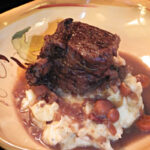For car audio enthusiasts seeking to fine-tune their sound experience, Pioneer offers a range of digital sound processors (DSPs). Among these, the Pioneer DEQ-7600 and DEQ-9200 models have often been compared. Understanding the distinctions between these two units is crucial for making the right choice for your audio setup. This article delves into a detailed comparison to help you decide whether upgrading to the DEQ-9200 from the DEQ-7600, or choosing either for a new system, is the optimal path for achieving your desired in-car audio perfection.
Pioneer DEQ-7600: Precision Equalization for Audio Shaping
The Pioneer DEQ-7600 is built around a core feature: a 15-band digital graphic equalizer. This powerful EQ allows users to meticulously sculpt the audio frequencies to match their preferences and car acoustics. With 5 factory presets and 3 user presets, it offers a versatile platform for quickly accessing preferred sound profiles or creating custom ones. The DEQ-7600 also incorporates Hi-Bit Legato Link digital processing, aimed at enhancing sound reproduction fidelity by providing 20-bit accuracy. Features like electronic dual-amp balancing and a spectrum analyzer further solidify its position as a robust audio enhancement tool.
Pioneer DEQ-9200: Expanding Sound Control with Advanced DSP
Stepping up from the DEQ-7600, the Pioneer DEQ-9200 introduces a broader spectrum of digital signal processing capabilities. Beyond equalization, the DEQ-9200 boasts a DSP audio processor equipped with Auto EQ. This automated feature utilizes a microphone to analyze your car’s acoustic environment and automatically adjusts the EQ settings to achieve an optimized frequency response. Furthermore, the DEQ-9200 expands sound customization with features like time alignment, allowing for precise sound staging, and a digital crossover network in Pro Mode, offering advanced control over frequency distribution to different speakers. Like the DEQ-7600, it includes Legato Link conversion, but in the DEQ-9200 it is an 8fs 1-Bit system, aiming for the purest audio signal processing.
Key Differences: DEQ-7600 vs DEQ-9200
The primary distinction lies in the breadth of features. The DEQ-7600 excels in providing detailed equalization with its 15-band EQ, making it ideal for users primarily focused on frequency shaping. The DEQ-9200, however, expands upon this by incorporating a full DSP suite. This includes Auto EQ for automated sound calibration, time alignment for optimizing the soundstage, and a crossover network for advanced speaker management. While both units share features like Legato Link processing and multiple presets, the DEQ-9200 targets users seeking a comprehensive suite of audio tuning tools, whereas the DEQ-7600 caters to those prioritizing advanced equalization.
Which DSP to Choose?
Choosing between the Pioneer DEQ-7600 and DEQ-9200 depends largely on your audio goals and technical requirements. If your focus is primarily on detailed frequency adjustments and you appreciate a powerful graphic equalizer, the DEQ-7600 remains a highly capable choice. However, if you desire a more comprehensive audio enhancement solution with automated calibration, sound staging adjustments through time alignment, and advanced crossover capabilities, the DEQ-9200 is the superior option. For those considering an upgrade from the DEQ-7600, the DEQ-9200 offers a significant step up in DSP functionality, justifying the upgrade, particularly if features like Auto EQ and time alignment align with your audio tuning objectives. Ultimately, evaluate your specific needs and system requirements to determine which Pioneer DSP will best elevate your in-car listening experience.

